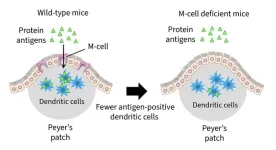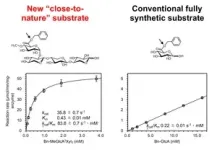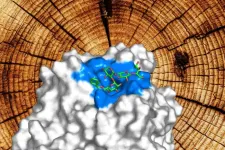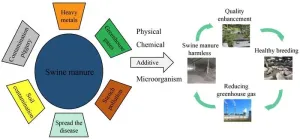(Press-News.org) Researchers led by Hiroshi Ohno at the RIKEN Center for Integrative medical sciences (IMS) in Japan have discovered that food antigens like milk proteins help keep tumors from growing in our guts, specifically the small intestines. Experiments revealed how these proteins trigger the intestinal immune system, allowing it to effectively stop the birth of new tumors. The study was published in the scientific journal Frontiers in Immunology on Sep. 18.
Food antigens get a lot of negative press because they are the source of allergic reactions to foods such as peanuts, shellfish, bread, eggs, and milk. Even when they don’t lead to allergic reactions, these antigens—along with the many others found in plants and beans—are still considered foreign objects that need to be checked out by the immune system. Ohno and his team have previously reported that food antigens activate immune cells in the small intestines, but not the large intestines. At the same time, some immune cells activated by gut bacteria are known to suppress tumors in the gut. In the new study, the RIKEN IMS researchers bring these two lines of thought together and tested whether food antigens suppress tumors in the small intestines.
The team began with a special kind of mouse with a mutation in a tumor-suppression gene. Like people with familial adenomatous polyposis, when this gene malfunctions, the mice develop tumors throughout the small and large intestines. The first experiment was fairly simple. They fed these mice normal food or antigen-free food and found that the ones that got normal food had fewer tumors in the small intestines, but the same amount in the large intestines.
Next, they added a common representative antigen called albumin—which can be found in meat and was not in the normal food—to the antigen-free diet, making sure that the total amount of the protein equaled the amount of protein in the normal diet. When the mice were given this diet, tumors in the small intestine were suppressed just as they has been with normal food. This means that tumor suppression was directly related to the presence of antigen, not the nutritional value of the food or any specific antigen.
The three diets also affected immune cells, specifically T cells, in the small intestines. Mice that got the plain antigen-free diet had many fewer T cells than those that got the normal food or the antigen-free food with milk protein. Further experiments revealed the biological process that makes this possible.
These findings have clinical implications. Similar to antigen-free diets, clinical elemental diets include simple amino acids, but not proteins. This reduces digestive work and can help people with severe gastrointestinal conditions, such as Crohn's disease or irritable bowel syndrome. According to Ohno, “small intestinal tumors are much rarer than those in the colon, but the risk is higher in cases of familial adenomatous polyposis, and therefore the clinical use of elemental diets to treat inflammatory bowel disease or other gastrointestinal conditions in these patients should be considered very carefully.”
Elemental diets are sometimes adopted by people without severe gastrointestinal conditions or allergies as a healthy way to lose weight or reduce bloating and inflammation. The new findings suggest that this could be risky and emphasizes that these kinds of diets should not be used without a doctor’s recommendation.
END
Proteins in meat, milk, and other foods suppress gut tumors
2024-09-18
ELSE PRESS RELEASES FROM THIS DATE:
Measuring how much wood a wood shuck shucks with all-new wood shuck food
2024-09-18
Researchers want to transform the natural and abundant resource wood into useful materials, and central to that is a molecular machine found in fungi that decomposes the complex raw material into its basic components. A Kobe University researcher and his team now were the first to come up with a test feed for the fungal molecular machine that allows them to observe its close-to-natural action, opening the door to improving it and to putting it to industrial application.
Biochemical engineers want to transform the abundant and renewable material wood into bioplastics, medically relevant chemicals, food additives or fuel. ...
AACR Cancer Progress Report highlights innovative research, novel treatments, and powerful patient stories
2024-09-18
PHILADELPHIA – Today, the American Association for Cancer Research (AACR) released the 14th edition of its annual Cancer Progress Report. This comprehensive report provides the latest statistics on cancer incidence, mortality, and survivorship. It also outlines how basic, translational, and clinical cancer research and cancer-related population sciences—largely supported by federal investments in the National Institutes of Health (NIH), the National Cancer Institute (NCI), the U.S. Food and Drug Administration (FDA), and the Centers for Disease ...
How do exogenous additives affect the direction of heavy metals and the preservation of nitrogen in pig manure compost?
2024-09-18
Most of the heavy metals in pig manure originate from feed additives, such as copper and zinc. When these heavy metals are introduced into agricultural soil, they can significantly increase the heavy metal content in crops, posing a threat to both the environment and human health. While pig manure is rich in nitrogen, an essential nutrient for crop growth, a substantial amount of nitrogen is lost in gaseous form during the composting process, impacting the quality of the compost. Moreover, this process results in the emission of ...
Breakthrough in fertility treatment: Prostaglandin receptors found to promote embryo implantation
2024-09-18
A team from Kumamoto University has uncovered a new mechanism that could revolutionize infertility care by promoting embryo implantation. The discovery focuses on prostaglandin (PG) receptors in the uterus that enhance the critical process of decidualization, which is necessary for a successful pregnancy. This finding opens the door to developing new fertility treatments that target these receptors.
Prostaglandins are bioactive lipids known for their role in body’s response to injury by causing fever and pain, but they are also crucial in reproductive ...
What numbers do you see? A new bistable perceptual phenomenon on symbolic numbers
2024-09-18
Perceptual recognition of numerical characters, like Arabic numerals, is indispensable for our daily activities in the modern society. Studying the perceptual and neural mechanisms that endow us with the ability to understand those characters is an important scientific topic. In this project, researchers explored a bistable perceptual phenomenon of a specially designed character named occluded digital numeral, to get a deeper understanding of the mechanisms underpinning the perceptual recognition of numbers.
The digital numeral is a special version of number fonts designed for application in electronic products ...
Quantum speedup and limitations on matroid property problems
2024-09-18
Quantum computers show advantages over classical computers in some problems, such as unordered data base searching and prime factorization. Finding more problems that can take quantum speedup has become one of the focus problems in quantum computing. Before this, there is no research work on the quantum query complexity and quantum algorithm for matroid problems. It is interesting and meaningful to search for structures that can take quantum advantage in matroid problems.
In order to study the possibility and limitation of acceleration of quantum computing in matroid problems, a ...
Unravelling an ancient European extinction mystery: Disappearance of dwarf megafauna on palaeolithic Cyprus
2024-09-18
Scientists have unravelled a mystery about the disappearance of dwarf hippos and elephants that once roamed the picturesque landscape on the Mediterranean island of Cyprus before palaeolithic humans arrived.
Cyprus only had two species of megafauna present during the Late Pleistocene — the 500-kg dwarf elephant (Palaeoloxodon cypriotes), and the 130-kg dwarf hippo (Phanourios minor), but both species disappeared soon after humans arrived around 14,000 years ago.
In examining the reasons behind the extinction of these prehistoric animals, research funded by the European Regional Development Fund and the Republic of Cyprus through the Research and Innovation Foundation ...
Highly-sensitive beaks could help albatrosses and penguins find their food
2024-09-18
Researchers have discovered that seabirds, including penguins and albatrosses, have highly-sensitive regions in their beaks that could be used to help them find food. This is the first time this ability has been identified in seabirds.
An international team of researchers, led by the University of Cambridge, studied over 350 species of modern birds and found that seabirds have a high density of sensory receptors and nerves at the tip of their beaks, which has been previously identified in specialised tactile foragers such as ducks.
The researchers say this touch-sensitive region could have come from a common ancestor, and further work is needed to determine ...
Self-reporting of health may lead to underestimation of health inequalities in England
2024-09-17
UNDER STRICT EMBARGO UNTIL TUESDAY 17 SEPTEMBER 23:15 UK TIME (BST).
Self-reporting of health may lead to underestimation of health inequalities in England
Peer reviewed | Observational study | People
A first-of-its kind analysis of data collected from England’s annual health survey found that of the people who reported their health as ‘poor’, those living in areas of high deprivation are likely to have worse health than those living in the least deprived areas.
This could mean that we are ...
New research shows how oral cancer cells avoid immune system
2024-09-17
Macquarie University researchers have discovered new information about how oral cancer cells may block the body's immune response. This could lead to better treatments for this aggressive disease.
Their research, published in the Journal of Oral Biosciences this month, looked at protein interactions in oral cancer cells that might stop our immune cells from attacking these tumours.
Oral cancer is the sixth most common cancer in Australia and the most common in India. Advanced forms of oral cancer are hard to treat, with patients typically surviving less than 12 months.
Lead author Dr Rajdeep Chakraborty from Applied Biosciences ...









